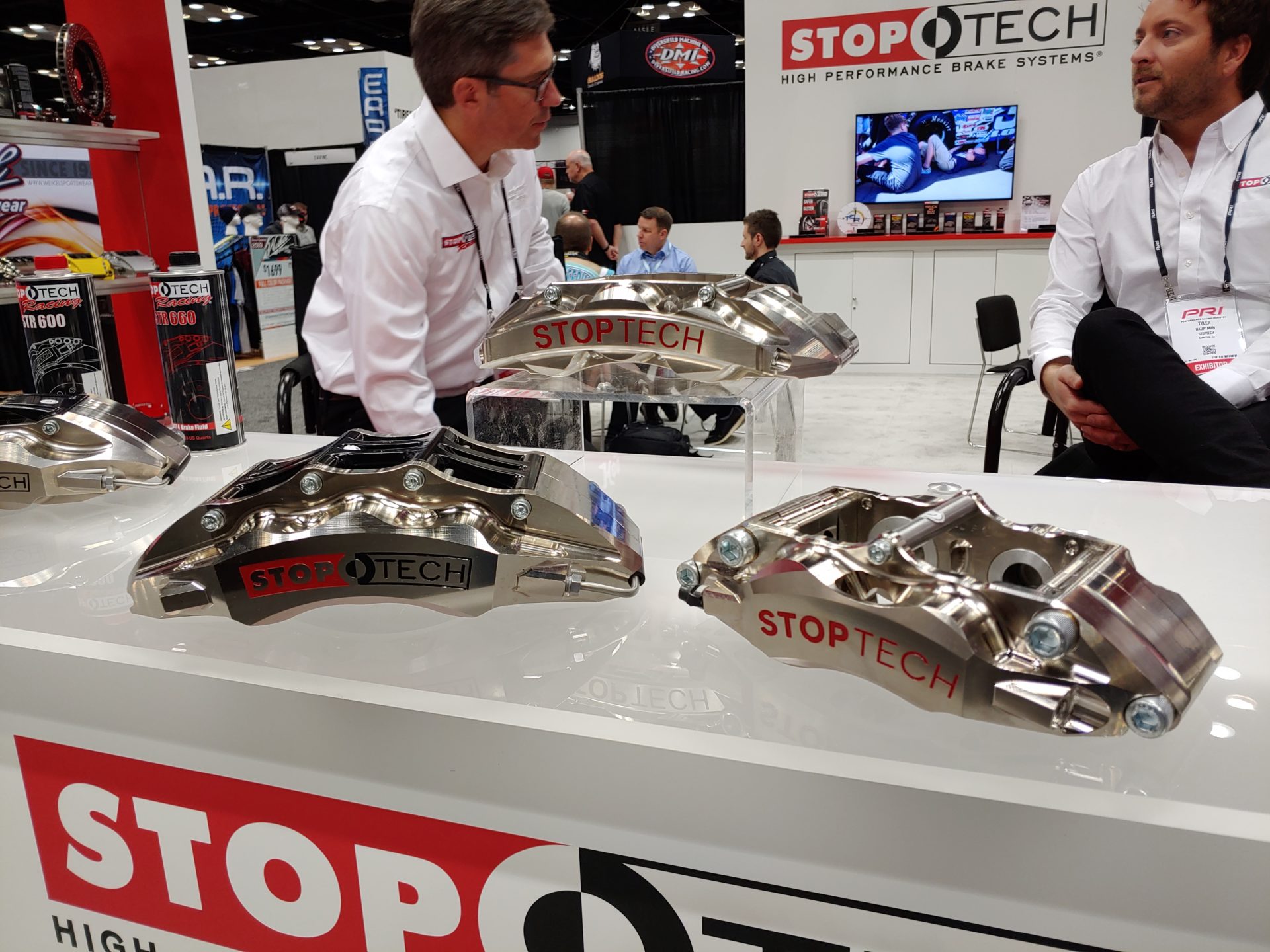
The VCU-200 and VCU-300 are part of a new line of of EV control systems from AEM. With a growing community of custom- and motorsports EVs, AEM is looking to support this market with true all-in-one powertrain management systems. The VCU integrates all of the required subsystems into a single unit — DC/DC converters, battery management, battery charging, and contactors. Pictured here is a mock up of a Cascadia Motion EV system being controlled by AEM’s solution.
AEM has also released a membrane switch panel and an 8-channel power distribution module to go with the VCUs to offer complete vehicular control.
On a more personal level, I’m quite excited about the new version 2.1 release of the Dash Design software for use with the CD-7 dash that’s in Project SC300. It includes a new simulation mode that lets you test out your dash configuration without having to run it in the car. Not everyone can easily simulate dash conditions on a bench rig for testing dash configurations.

The bowtie V8 is not exactly a tall motor in the way that a Volkswagen VR6 is, but that intake manifold still has to end up somewhere. And, in something with a low hood line, height can quickly become a tough commodity to find. Adding forced induction to the mix, either in the form of a centrifugal blower or a turbocharger, involves quite a bit of plumbing which also has to end up at the inlet of the intake manifold. Enter Holley’s low ram manifold, designed for just such applications!
Holley has also continued to develop their Terminator and Terminator X plug-and-play powertrain management systems, adding new Ford-based applications. These budget-friendly systems offer an impressive set of features, and now those features are available for vehicles with 289-302W, 351W and 460 engines.


Based on their M1 platform, the M122 offers support for up to 4-cylinder DI applications, which means that many of the popular small displacement import motors can now be controlled by this little box. Interestingly, it also opens up a lot of military/industrial applications, which is an area where MoTeC spends a lot of time. If it’s good enough for a war machine, it’s gotta be good enough for your drift machine!




8 comments
I’d like to see a study on the differences between split calipers like the stoptechs and forged monoblock calipers like AP/Alcons. Other than saving a few grams what do you get for a 50% price hike?
I’ve thought about putting a Fueltech ECU dash on my miata on and off since I heard about them. The support is what’s holding me back, there is a huge community of Megasquirt miata owners that can offer support. But the FT450 looks like a badass deal to me, ECU + dash + datalogger, it even has an internal MAP sensor.
I mean, it really wouldn’t be that hard of a test to do, just expensive as it’s not like they give the suckers away. You’re also going to have to try to be apples to apples, as I have a strong suspicion that some parts of AP, Alcon, PFC etc’s lineup have picked different values on the compromise scale of stiffness vs weight or are designed with different constraints. A lot of the high buck monoblock calipers are built to specific classes/configurations. Like, just as a for example, I think the STR60GT is (I think) a similar pad shape/volume to the Alcon TA6 caliper, but will it fit as big of a rotor into a 16″ race wheel? Probably not, because Stoptech probably wasn’t designing for a specific class.
The max rotor size is a good argument I hadn’t though of. You can probably get the same stiffness and rotor/pad size for half the price by going with a split caliper but if you want the biggest rotor you can fit in a wheel then monoblock would be the only option.
Which is not anything against Stoptech IMO, it’s just a “stuff designed to the limits of rules for specific applications will do better at that then a generalist design” thing.
@Nicolas Girard
Most modern racing ECUs have internal MAP as well as some level of logging. It’s really the integrated dash that is the bonus, as that’s generally a $600+ option from just about any other vendor.
For a non-forced-induction BP6 (I’m assuming NA/NB motor that doesn’t even have VVT) you really are fine with anything. If your motor is already running on the Megasquirt, you could go with one of the logging dashes like the AEM CD7-L. It’s pricey, but would round out everything you need, and in the future you could use any other ECU with that setup.
If you don’t have anything yet, the FT450 could be a great option, and the support should be pretty good. FuelTech is based right around the corner from me in Georgia and they’re super friendly. Most of your “issues” would be around wiring (no plug-and-play FT450-BP6 harness) and a base map (FuelTech probably doesn’t do many NA 4-cyls). But motors will run even with pretty bad maps and you just need to get it going well enough to get on the dyno =)
Thanks for the info, I’ve never installed an ECU myself, I’m looking at swaping my 200k miles BP6 to a later model engine BP4W or BPZ3 and the Megasquirt looks like the easiest option.
NA/NB miatas have chunky MAF sensors instead of MAP, I thought the megasquirt didn’t have an internal MAP (it does) because I’ve read about putting in a GM IAT/MAP sensor when you delete the MAF.
TIL: Turns out you do it because the MAF module you delete also has the intake air temp sensor inside, the GM part has the IAT and gives you a second MAP for barometric data.
For a first time, the plug in ECU with the wide user base is probably the more intelligent choice. The FT450 is still a great deal, it’s a bit cheaper than the MSpnpPRO, has a dash and real slick program.
The AEM dash is a cool piece but it is half the price of the Miata on its own. it would look off brand next to the knockoff Bride seats and cheapo NRG steering.
All good points. That MS3 Pro with a plug-and-play harness is going to work great. Good luck!
In theory the advantage of 1 piece calipers is less flex.
In practice I think would be hard to tell.